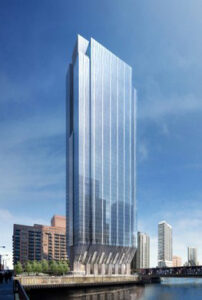 Just before 3 a.m. on Saturday, February 14, the mercury read 27°F in downtown Chicago with dropping temps and winds up to 40 mph expected as the morning progressed.
Just before 3 a.m. on Saturday, February 14, the mercury read 27°F in downtown Chicago with dropping temps and winds up to 40 mph expected as the morning progressed.
Still, it was the best weather the city had seen in days – so workers from Goebel Forming readied themselves as VCNA Prairie trucks carrying self-consolidating concrete (SCC) rolled up for the mat pour supporting a new, 54-story tower at 150 N. Riverside Drive .
Designed by Goettsch Partners for developer John O’Donnell, the structure sits on a slim site beside the Chicago River, made even more challenging by the railroad tracks that crisscross it.
Unlike the structure just north of it, the new tower will not span the tracks; instead, its narrow foundation fits neatly between the tracks and the river’s edge.
But the location – just blocks from the ice-bound shores of Lake Michigan – made the bitter temperatures even more difficult to take on D-day, says Trinidad Vega, Goebel VP and Job Superintendent.
“No question – it was incredibly cold out there!” he says. “But since we were working with SCC, we had a much smaller crew. Our two pumps remained stationary, and without the need to vibrate the mix, the carpenters, ironworkers and laborers working down in the hole were kept to a minimum.”
The building’s foundation measures 10’ thick, 162’ long and just 47’ wide, Vega notes. From this slender base, the tower will flare out to maximum width at the 7th floor and measure 742 feet tall when completed.
In all, the job will require 55,000 cubic yards with 12 unique mixes, says Steve Fleming, Prairie’s head of Technical Services and Support.
Early day at Yard 32
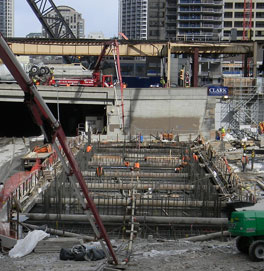
Working closely with Goebel crews were Prairie’s QC experts, both on-site and at nearby Yard 32, where trucks loaded with specially formulated and heated mix were scheduled to support placement of more than 200 yards per hour.
“We had one QC technician stationed at each pump on the site, monitoring flow and sending feedback to supervisors at the yard,” says Prairie Senior Technical Support Rep Gary Hall.
A full set of tests measuring air, mix temperature, compressive strength and spread (the SCC equivalent of slump) were taken every 200 cubic yards by Flood Testing Laboratories, Hall notes.
Testing before, during and after the pour
“Flowability was critical for this job,” Fleming says. “We did extensive tests ahead of the pour to pinpoint the right levels of polycarboxylate-based, high-range water reducer and high-volume cementitious supplements such as fly ash to assure the mix would pump well without segregating.”
Follow-up tests to confirm the concrete reaches 8,000 psi at 56 days will be taken. The mat does not have a specific early-strength requirement.
Other high-strength mixes specified for the job must meet exacting requirements. “Above the foundation to level 9, the design calls for 12,000-psi concrete with 6,600 ksi modulus of elasticity,” says Fleming. The mix for floors 10 through 22 must deliver 10,000 psi and 6,000 ksi Ec , with all successive levels at 8,000 psi and 5,400 ksi Ec.
Lessons learned from the massive mat pour at Trump Tower Chicago, along with SCC jobs performed since then, fed into the plans for this project, he adds.
“With Trump the foundation mix could not be pumped, but more recent jobs, especially those done with SCC, have given us the chance to develop new mixes and techniques. I think there’s a lot of confidence out there now – to the extent that SCC pours of this type, even in cold weather, are now considered routine,” he says.
Monitoring mix temps for best results
Although ACI standards allow for higher mix temperatures, “in extreme weather you don’t want to overheat the concrete, since that will affect heat of hydration,” Hall notes. Goal for maximum heat of hydration on this job was set at <160°F.
“We aimed to keep the mix temperature as low as possible while still considering set time,” says Hall. Boilers were set to produce concrete at 63°F to 65°F for the first few loads, then adjusted down to 60°F based on feedback from QC techs at the job site.
All-day, all-night challenge
Massive cold-weather pours test the tenacity of everyone involved – and this one was a marathon. Prairie team members gathered at Yard 32 just after 1 a.m. to prepare for the day ahead.
Work started off slowly as Goebel workers got things up and running. Placement moved from 150 to 200-plus yards per hour, with extra time needed at the end of the day to top off the slab, which has an unusual slope leading toward a drain.
In all, workers placed more than 3,000 yards of 8,000-psi concrete, finishing well after dark. Prairie ran 2 shifts of QC personnel at the job site and plant, supported by Operations staff led by Paul Blatner at Yard 32.
“Our sweethearts all had to wait to celebrate Valentine’s Day,” says Prairie Technical Support Manager Len Burkart. “But the pour was a real success, so it was well worth it.”
Trinidad Vega agrees. “We couldn’t have been happier with Prairie’s performance on this project,” he says. “Everything we needed, everything we asked for, they delivered.”
Work will continue on the project throughout 2015 with completion expected late next year. The finished structure will feature a street-level plaza with an estimated 1.5 acres of public park space.
To see the tower’s progress, check out the live webcam.
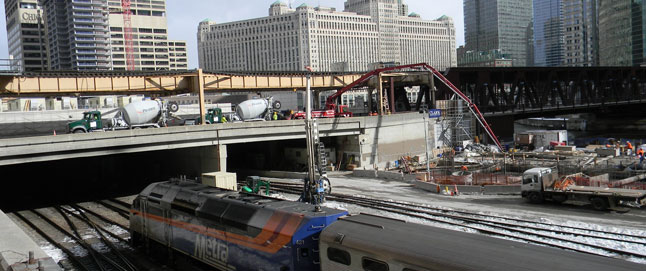
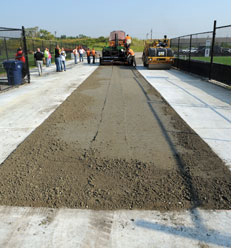
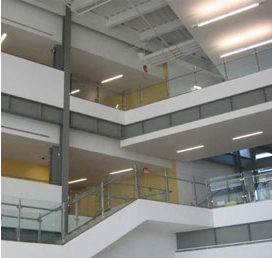
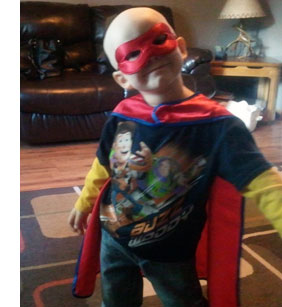


 United Materials
United Materials Superior Materials
Superior Materials Prairie Materials
Prairie Materials Canada Building Materials
Canada Building Materials VC Global
VC Global